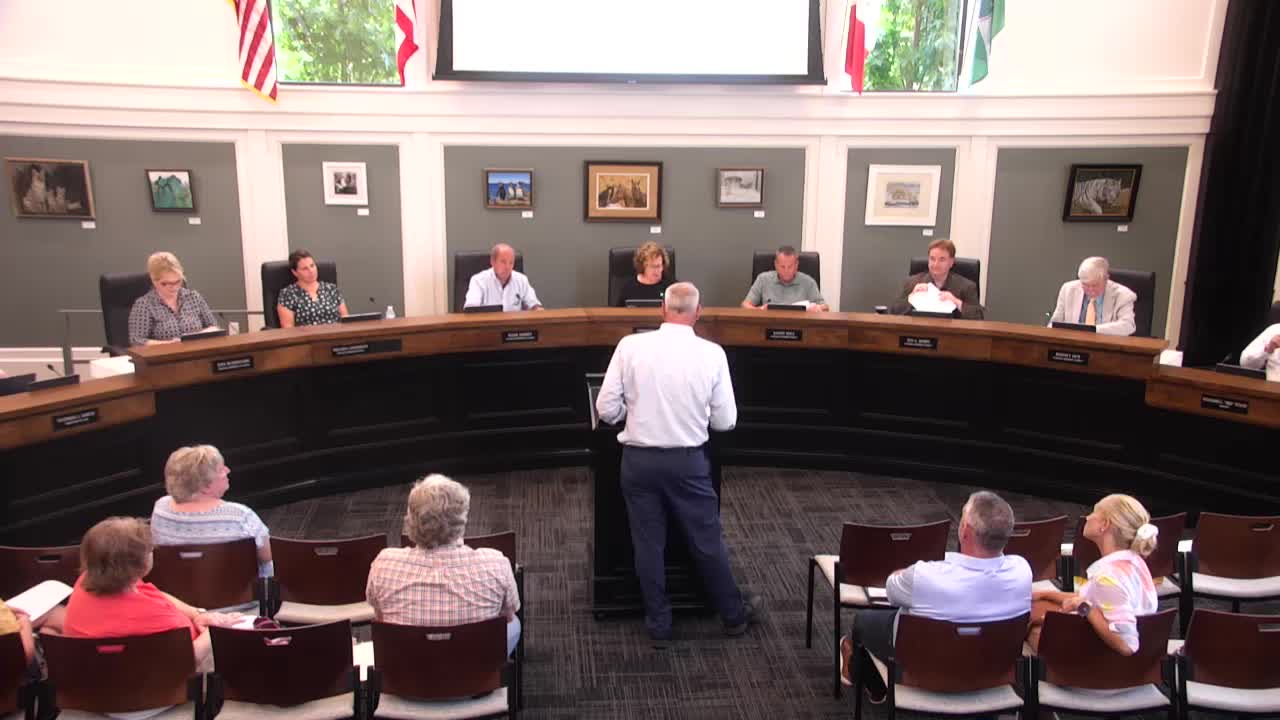City officials unveil ambitious tax budget for future growth
June 17, 2024 | Grove City Council, Grove City, Franklin County, Ohio

This article was created by AI summarizing key points discussed. AI makes mistakes, so for full details and context, please refer to the video of the full meeting. Please report any errors so we can fix them. Report an error »

During a recent government meeting, officials discussed the city's tax budget, emphasizing its importance for financial planning and resource allocation. The meeting began with a letter from the mayor outlining the tax budget, which serves as a formal estimate of revenues and expenditures for the upcoming fiscal years.
A key focus was the inclusion of a 10-year forecast in the tax budget, a practice not mandated but adopted by the city to anticipate future financial conditions. Officials clarified that while precise long-term predictions are impossible, fixed costs such as debt service can be projected to avoid unexpected financial shortfalls.
The tax budget details various funds, with the general fund and capital improvement fund accounting for 75% of the city's receipts. Notably, 80% of the city's revenue is derived from income taxes, with recent data indicating a 7% increase in net withholdings compared to the previous year. This trend is expected to continue, with projections for 2024 reflecting stable income tax revenues.
Officials highlighted the significance of local businesses in generating tax revenue, noting that withholding taxes from employers contribute significantly to the city's income. The meeting also touched on property tax assessments, revealing a 35% increase in Grove City's property valuation, which directly impacts tax revenues.
In terms of comparative tax rates, Grove City ranks fifth among 18 central Ohio communities in terms of millage rates, with only 6.9% of the average homeowner's tax bill allocated to the city. The discussion concluded with insights into the city's investment income, which has surged due to rising interest rates, further bolstering the city's financial outlook.
Overall, the meeting underscored the city's commitment to fiscal responsibility and transparency in its budgeting process, ensuring that council members and the public are informed about financial projections and the implications for future city services.
A key focus was the inclusion of a 10-year forecast in the tax budget, a practice not mandated but adopted by the city to anticipate future financial conditions. Officials clarified that while precise long-term predictions are impossible, fixed costs such as debt service can be projected to avoid unexpected financial shortfalls.
The tax budget details various funds, with the general fund and capital improvement fund accounting for 75% of the city's receipts. Notably, 80% of the city's revenue is derived from income taxes, with recent data indicating a 7% increase in net withholdings compared to the previous year. This trend is expected to continue, with projections for 2024 reflecting stable income tax revenues.
Officials highlighted the significance of local businesses in generating tax revenue, noting that withholding taxes from employers contribute significantly to the city's income. The meeting also touched on property tax assessments, revealing a 35% increase in Grove City's property valuation, which directly impacts tax revenues.
In terms of comparative tax rates, Grove City ranks fifth among 18 central Ohio communities in terms of millage rates, with only 6.9% of the average homeowner's tax bill allocated to the city. The discussion concluded with insights into the city's investment income, which has surged due to rising interest rates, further bolstering the city's financial outlook.
Overall, the meeting underscored the city's commitment to fiscal responsibility and transparency in its budgeting process, ensuring that council members and the public are informed about financial projections and the implications for future city services.
View full meeting
This article is based on a recent meeting—watch the full video and explore the complete transcript for deeper insights into the discussion.
View full meeting
